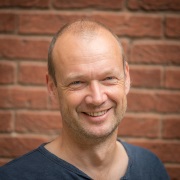Andreas Rietbrock

Andreas Rietbrock graduated from the Ludwig Maximilians University Munich, Germany, with a Doctorate in Geophysics in 1996, working in the field of earthquake seismology. Subsequently he spent two years at Free University of Berlin, Germany, where his long-standing research interest in subduction zone earthquakes began. He then moved to the University of Kyoto, Japan, as a JSPS fellow working with the research group at the Disaster Prevention Centre on Seismic Hazard issues. In 1999 he took up the position as Assistant Professor at the University of Potsdam working on the Chilean subduction zone and seismic hazard. He joined the University of Liverpool in 2002 as a lecturer in Geophysics in the Department of Earth and Ocean Sciences when he started to build up the Seismology research group at Liverpool. He is now the Head of Department of Earth, Ocean and Ecological Sciences and research leader of the Earthquake Seismology and Geodynamic research group, which comprises about 20 researchers.
His research focuses on the field of seismology and falls into three major areas: the physical understanding (geodynamics) of active continental margins including “mega-thrust” earthquakes; earthquake hazard assessment, in particular the development of Ground Motion Prediction Equations (GMPEs) and their application to stable continental regions; and developing data mining and data intensive computation strategies for seismological applications. In the last 15 years he has been heavily involved in studying the active continental margin of Chile and he helped to coordinate the multinational deployment of seismic and geodetic stations after the 2010 Maule, Chile, earthquake. Recently, his group also studied the Sumatran margin, Mentawai segment, focusing on the internal structure of the forearc imaged by local/regional seismicity. He is also working on seismic hazard analysis for the UK, especially on the topic of how weak ground motions can be used to estimate future strong ground motion shaking. Additionally, he was leading the eScience theme in Seismology, funded by the National eScience centre, UK. This theme brings together the international seismological community and computational scientists in a series of workshops to identify the current shortcomings and future priorities in data and computational intensive seismological applications. Over the last 10 years he has also worked extensively as an earthquake hazard consultant and has been involved in SHCAC level seismic hazard assessment in Switzerland and most recently in South Africa.
